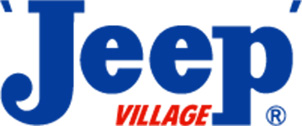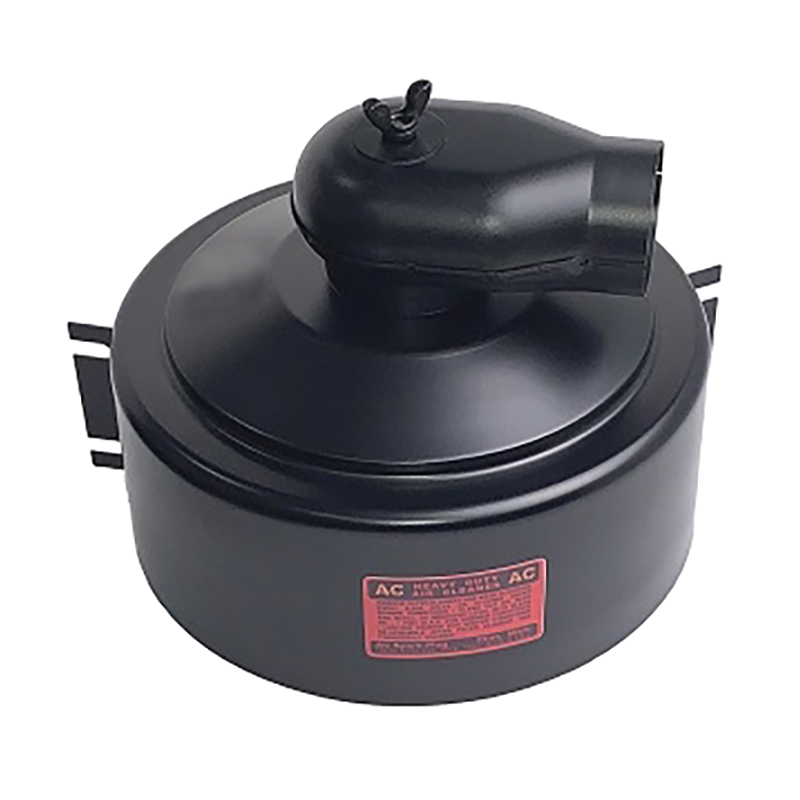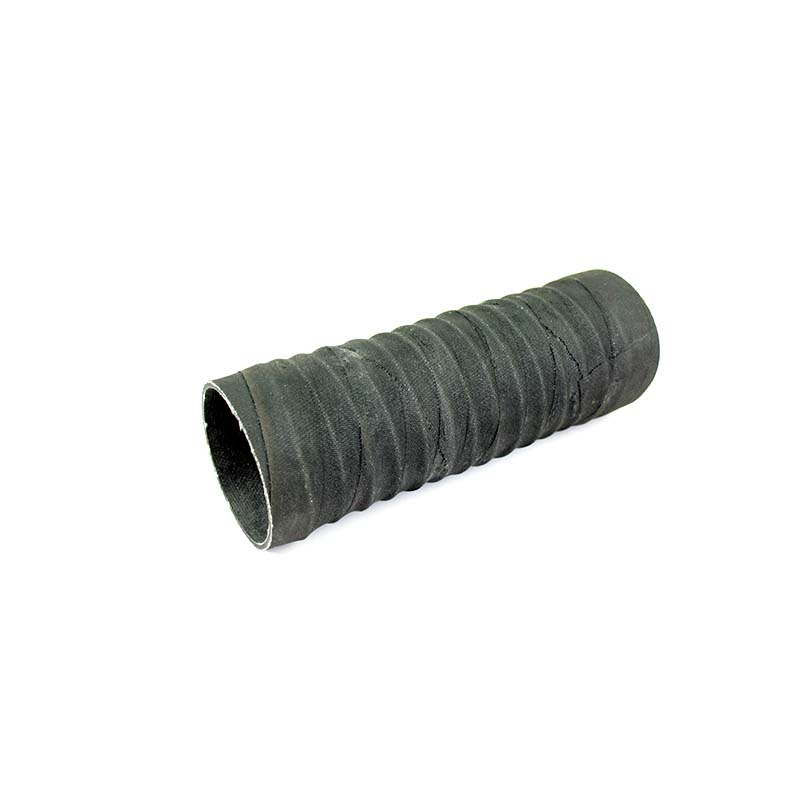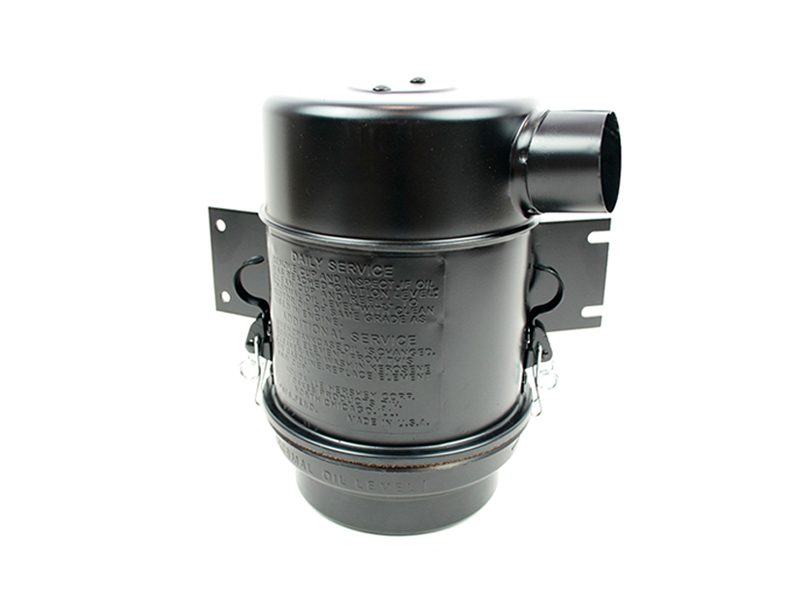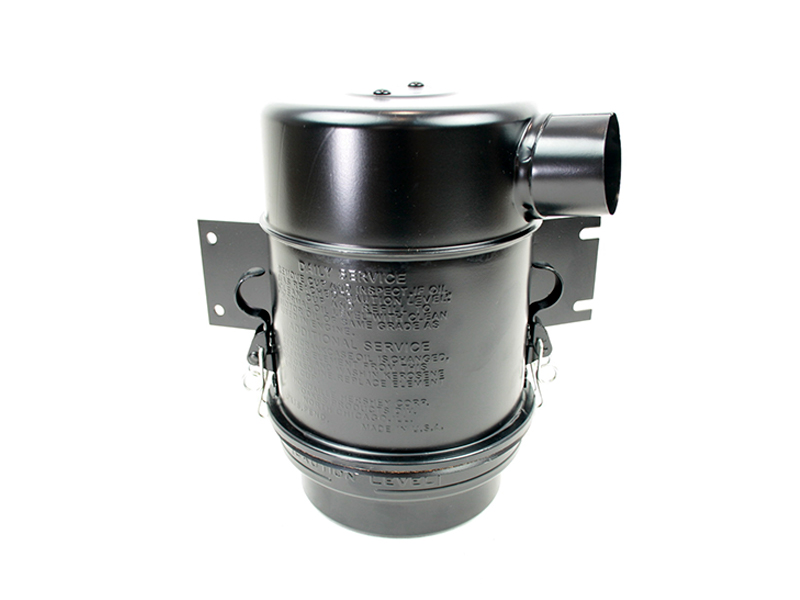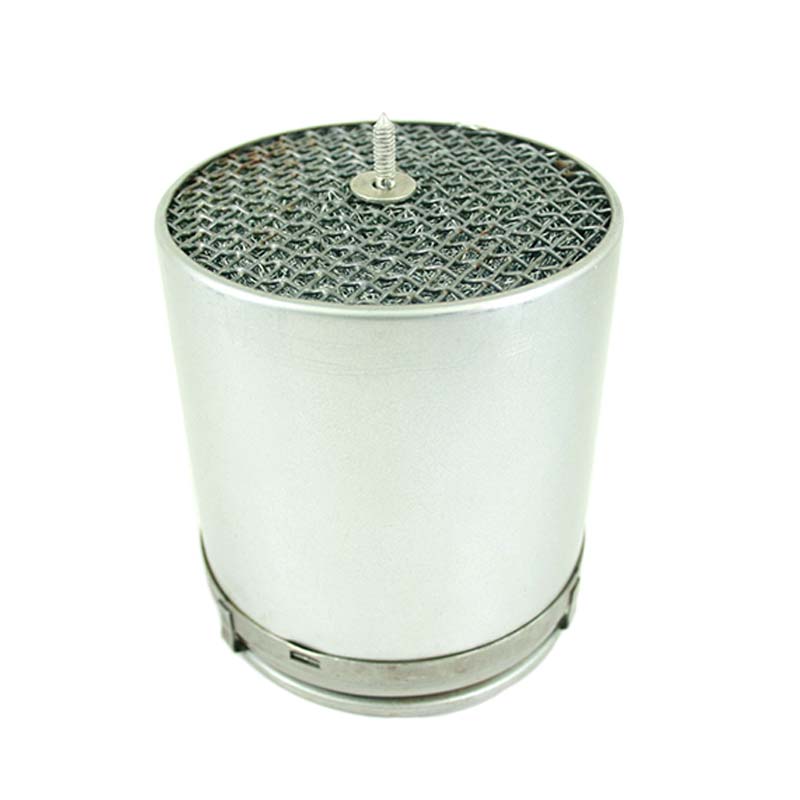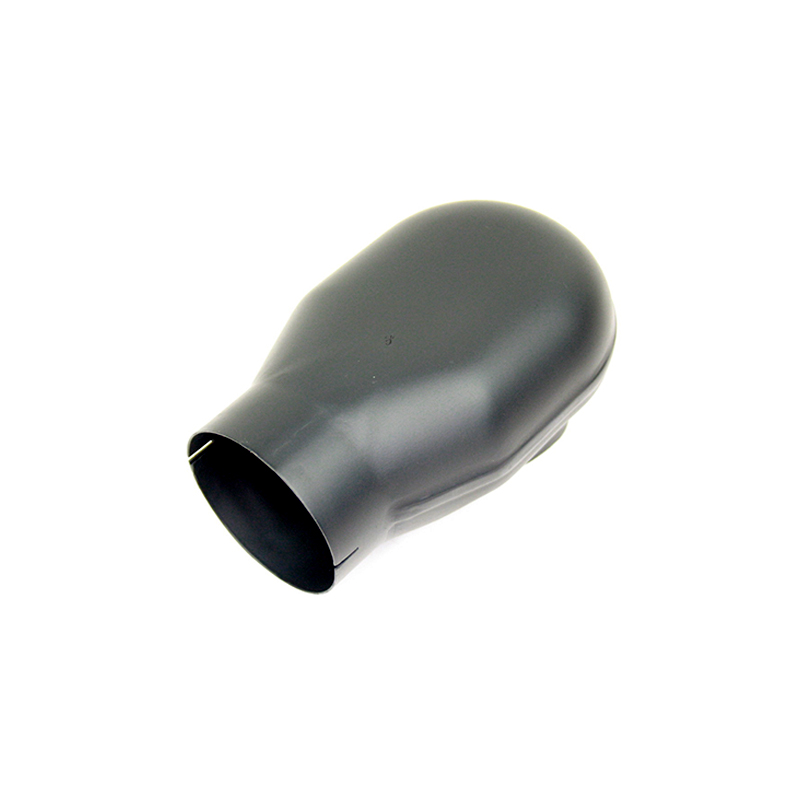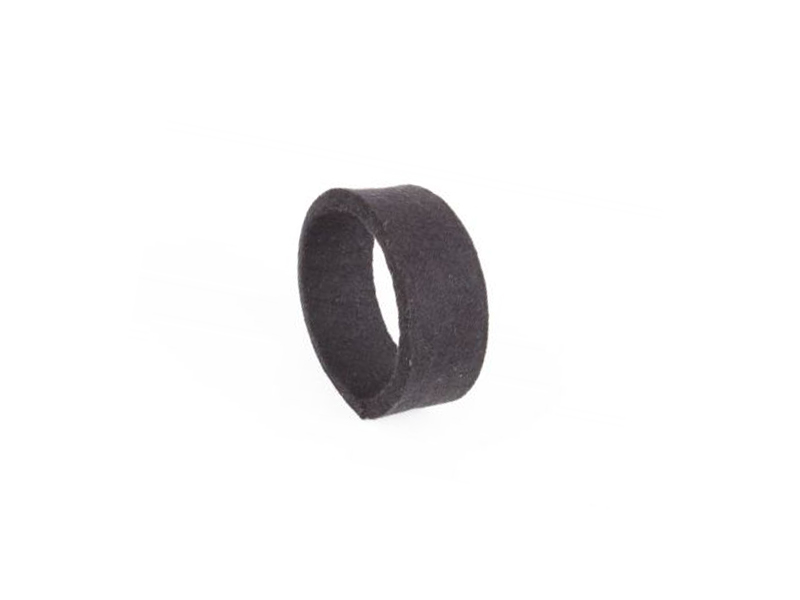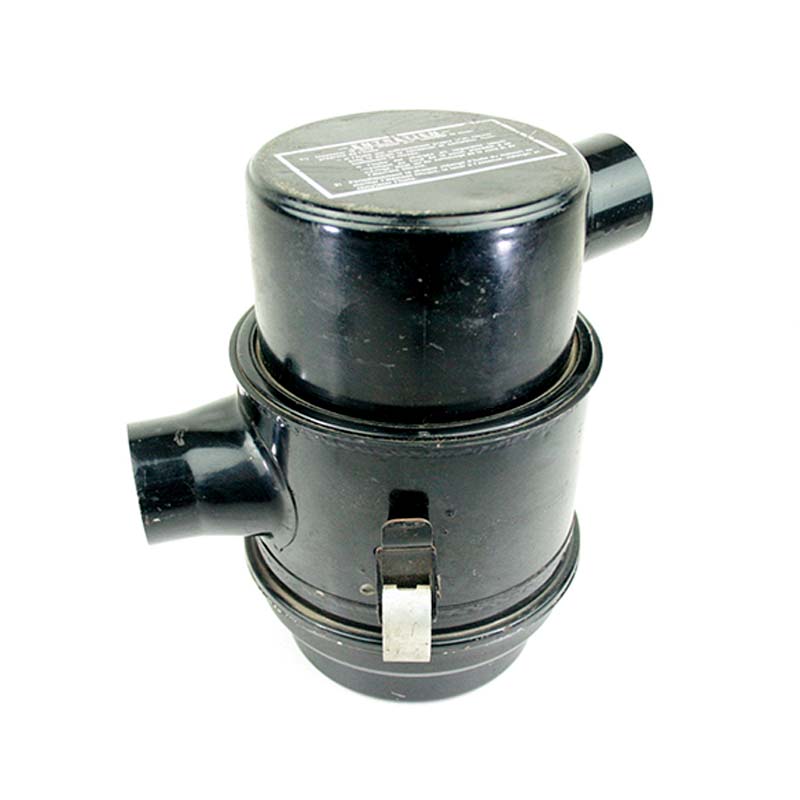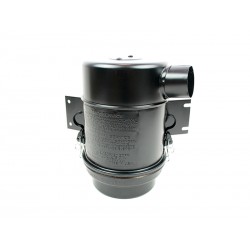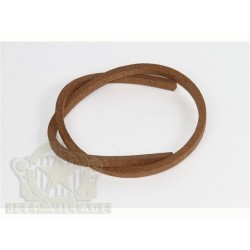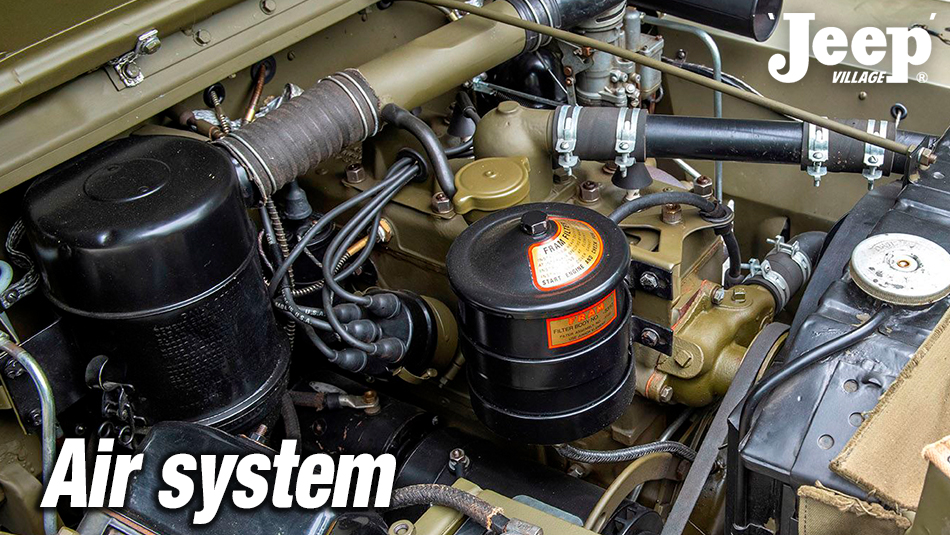
Air system
Inhale Freedom: The Importance of the Air Circuit
When discussing our classic Jeeps, the air circuit is a crucial element that influences the engine's operation. In this article, we will explore the differences between the early and late air circuits during the war, as well as the specificities between American and French Jeeps that do not have the same circuit and location. We will first address the differences between the "Early" and "Late" air circuits of Willys MB and Ford GPW.
1. Early War vs. Late War: Evolution of the Air Circuit
At the beginning of the war, the MB and Ford GPW Jeeps were equipped with relatively simple air filtration systems already existing in cars of that era. The air filters were made of paper and less sophisticated, quite different from the late-war models.

Willys MB L4-134 Go-Devil Engine with "Pancake" air filter
Here is the "Pancake" air filter, named for its flat shape (serial numbers 100001 to 124308, Nov. 1941 to Mar. 1942), similar to the filters on Dodge and GMC vehicles. However, instead of a vertical air intake, the air is drawn from the rear, immersed in a light oil bath, and filtered before being distributed from the top through an air elbow similar to that of the carburetor, connecting to it through a fitting and tube (without active ventilation on the tube/support. On early productions, there was even a long through-hose without support, similar to the cooling hose).
1. Early Air Filter (WOA5621P) 2. Non-return air tube (WOA1290) 3. Hose between air filter and tube (WOA1311)
Over time, starting from 1942 (from serial number 124309 in March 1942), improvements were made to enhance filtration efficiency, mainly through the improvement of the oil bath air filter. This enhancement allows for better filtration of impurities in the air on the battlefield by passing the air through oil before ascending.
This time, the air is drawn through a smaller orifice at the rear, passes through a large oil bath, ascends through the cartridge for filtration, and is finally distributed from the top to the carburetor through a fitting and tube (with active ventilation on the tube/support from serial number 208737 in February 1943).
1. Air Filter 1942-1943 (WOA5621E) 2. Air Filter 1943-1945 (WOA5621)
The air filter cartridge is mandatory to be metallic during World War II. Like compressed steel wool instead of paper, these cartridges are much more robust, especially for the oil bath system, and can be reused by cleaning the cartridge in gasoline if it remains in good condition.
1. Air Filter Cartridge (WOA5630)
All of this led to more advanced and durable air filters. However, the air circuits on civilian Jeeps became simpler again, as these vehicles were not exposed to the harsh conditions of the battlefield.
In the rest of the air circuit, there is a minimal difference and evolution between the Willys MB and the Ford GPW. As usual, Ford will mark its parts with "F" and prefer the use of felt for the hose between the air tube and the air elbow.
1. Carburetor Air Elbow GPW (WOA463F) 2. Felt Hose between Air Tube and Elbow (WOA1451F)
Know About: The WV-6 Snorkel Kit
In 1943, to deploy jeeps during amphibious landings, a special kit was created. This kit allowed jeeps to be unloaded from landing barges in deep water without damaging the engine or electrical system. After several versions, the US Army adopted the universal WV-6 kit, used on various trucks during World War II. It included flexible pipes for exhaust and air intake, as well as seals to ensure waterproofing.
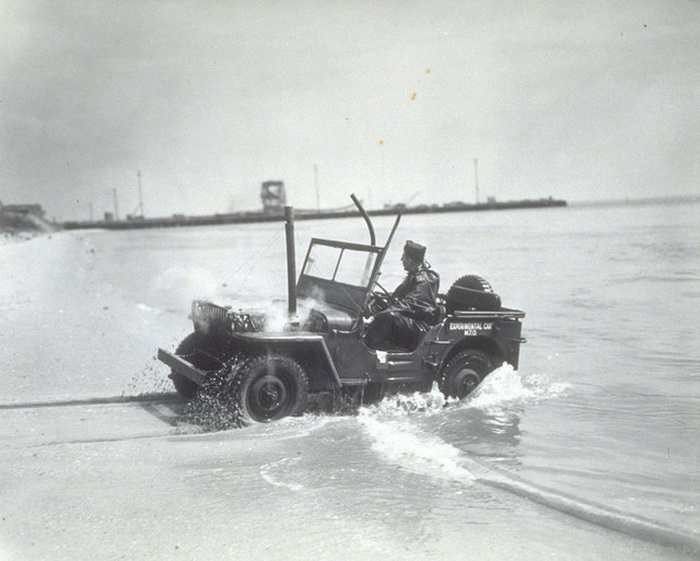
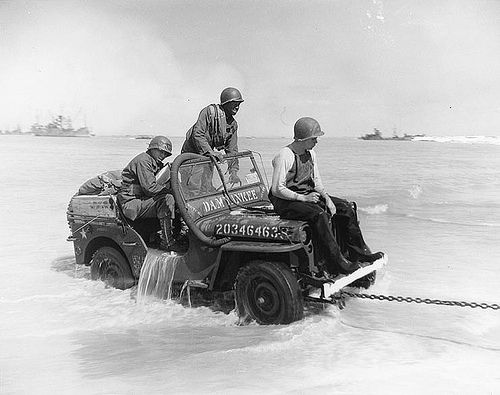
Period photos show these modifications, including jeeps equipped with intake snorkels and winches. To prepare vehicles for crossing deep waterways, the army had established detailed procedures, including the application of special products to seal the vehicle components. After a crossing, meticulous maintenance was recommended to ensure the proper functioning of the vehicle (as discussed in the article on the invasion flag windshield).
2. American Jeep vs. French Jeep: Differences in the Air Circuit
French Jeeps, specifically the Hotchkiss M201, have often been equipped with specific components based on the standards and numerous modifications made by the French military. This has led to differences in the air circuit compared to American models due to the second battery for 24 volts.
It is important to be aware of these distinctions if you own a French Jeep or if you are considering restoring one.
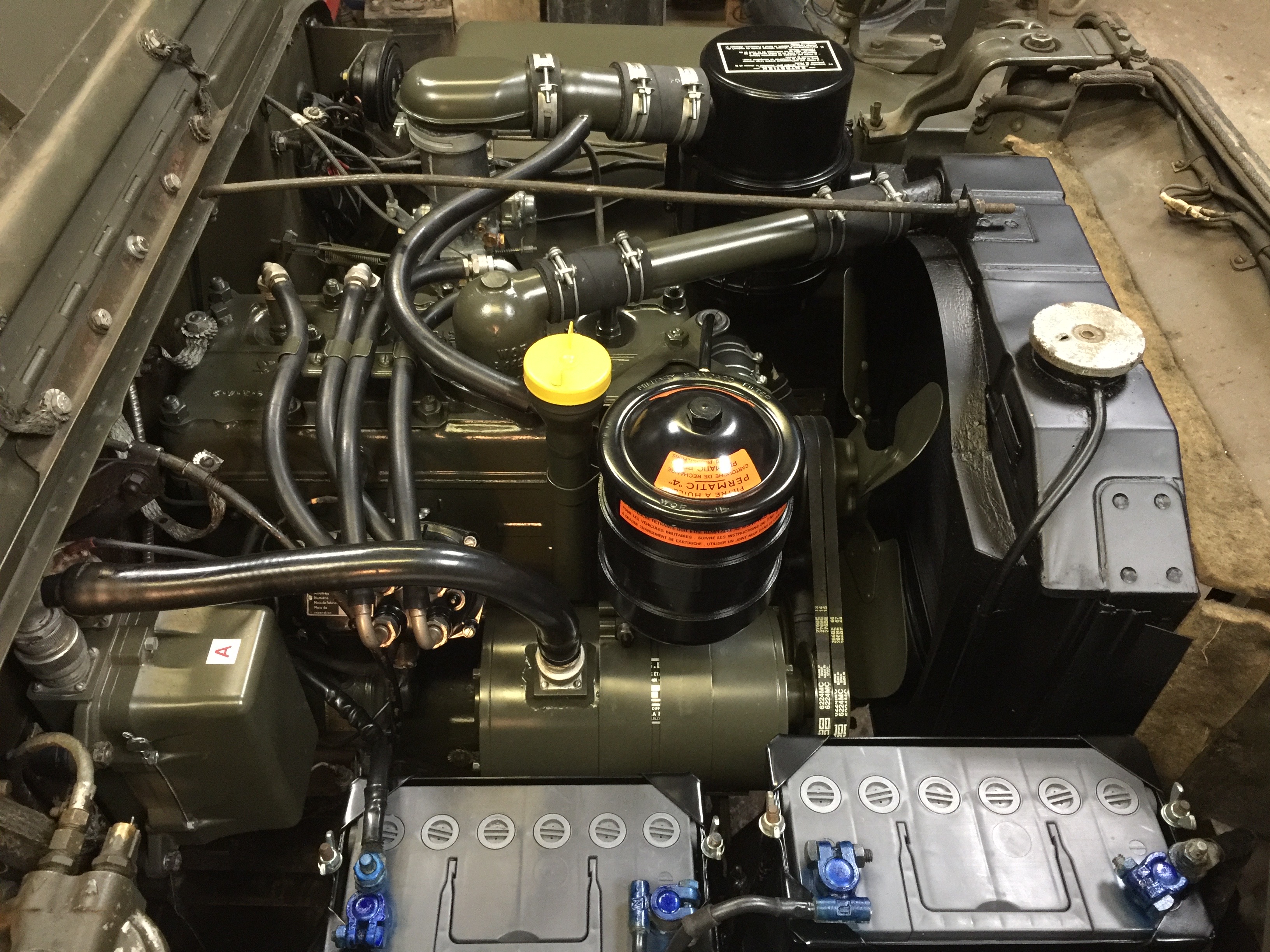
Modified L4-134 Go-Devil engine by the French military in a Hotchkiss M201 24 volts
Related to the 24-volt modification with the second battery, the regulator takes the original place of the air filter, which now goes almost directly between the radiator and the carburetor. Due to this new location, the air filter takes on a new shape and support but retains the same system and cartridge that proved its effectiveness on the Willys MB and Ford GPW during World War II.
Similar, but with the difference that the air intake is now at the front, avoiding the hot air from the manifolds and providing a higher airflow against the wind. Another subtlety is the maintenance instructions on the top in the French language.
1. M201 24V Air Filter (HO88396) 2. Air Tube between the Filter and the Carburetor (HO88506) 3. Air Filter Support on Fender (HO88449)
3. The Importance of Air Circuit Maintenance
Regardless of your Jeep's manufacturing period or origin, maintaining the air circuit is crucial to ensure optimal operation. Make sure to regularly check your air filter, its oil level, which is the same as your engine's (20W50), clean or replace the filtering elements when necessary, and ensure that the air circuit is free of any undesirable air leaks.
Know About : M201 Sahara Air Pre-Filter
In addition to its specific fuel pump and heat shield, another feature of the Hotchkiss M201 Sahara is its air pre-filter on the wing. Manufactured for the French army by the company Técalémit, its function is to filter a larger amount of air to limit clogging when the Jeep is used in arid desert conditions.
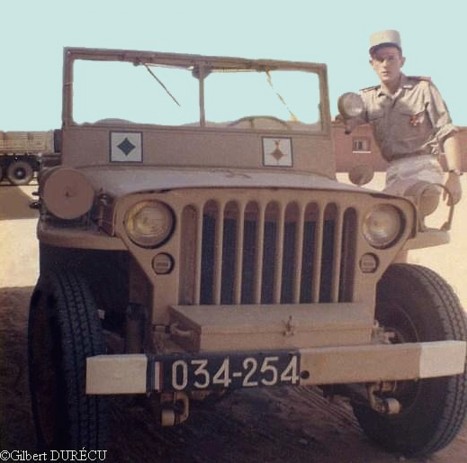
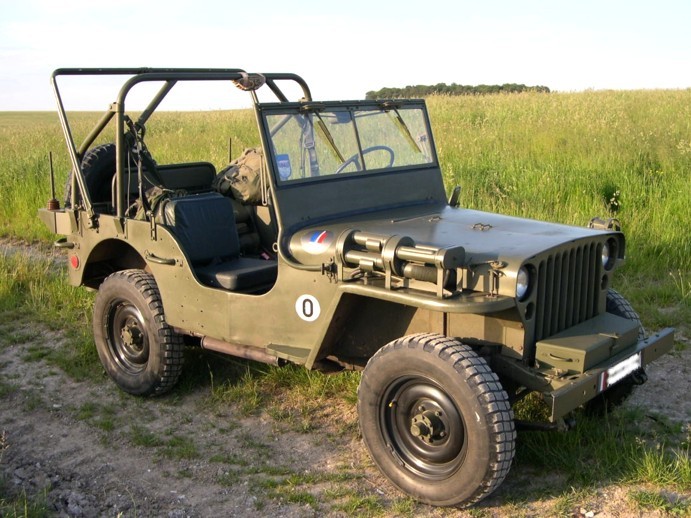
This pre-filter has 5 "cyclones," which are cylinders in which particles are eliminated by centrifugal force and air mixing.
Contaminated air enters the cyclone through a scoop. The flow is disrupted and mixed by the protrusions located opposite the scoops.
The particles are sucked in by the pipes connected to the exhaust pipe while the filtered air is drawn towards the air filter.
3. Importance of Air Circuit Maintenance
Regardless of the production period of your Jeep or its origin, air circuit maintenance is essential to ensure optimal operation. Make sure to regularly check your air filter, its oil level, which incidentally is the same oil as your engine (20W50), clean or replace the filter elements when necessary, and ensure that the air circuit is free from any unwanted air leaks.
In Conclusion:
The air circuit plays a crucial role in the operation of your classic Jeep, whether it's from the early or late war period, American or French. Understanding these differences and the importance of maintenance will allow you to fully enjoy the off-road driving experience. Feel free to consult with us during the restoration of your off-road vehicle for personalized advice on the air circuit of your classic Jeep. Get ready to embark on an adventure without limits with confidence!
